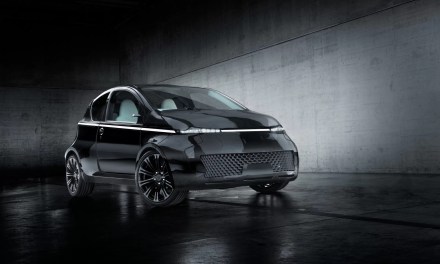Boom Supersonic, the Denver, CO-based aerospace startup aiming to build the world’s fastest commercial airliner, has been awarded a contract by the U.S. Air Force under a program helping to fund future-application innovations. Specifically, the contract funds explorations of a configuration of Boom’s Overture aircraft designed for Air Force executive transport. The U.S. Department of Defense and the U.S. Air Force manage all air transport for executive branch top leadership, including Air Force One.
“Supersonic flight brings people together, whether for work, family, or global diplomacy,” said Blake Scholl, Boom Founder and CEO. “By cutting travel times, we make it possible for U.S. diplomats and executive leaders to connect more frequently in person, meeting challenges, and defusing potential crises with a personal touch.”
The Overture aircraft is said to offer the U.S. Air Force a unique combination of passenger capacity, speed, and enough space and power to accommodate various mission requirements. It can be configured for multiple cabin zones for a layout with as much privacy as necessary.
“The United States Air Force is constantly looking for technological opportunities to disrupt the balance of our adversaries,” said Brigadier General Ryan Britton, Program Executive Officer for Presidential & Executive Airlift Directorate. “Boom is an example of the American ingenuity that drives the economy forward through technological advances.”
In addition to its potential for executive transport, Boom says that Overture could be adapted to satisfy other Air Force and broader Department of Defense mission requirements. It could also become part of the CRAF (Civil Reserve Air Fleet), enabling humanitarian and other critical airlifts in half the time.
Boom’s vision with Overture is to take inspiration from the log-departed Concorde in resurrecting commercial supersonic flight, bringing families, businesses, and cultures closer together through supersonic travel and making the world more accessible. The company was founded in 2014 by CEO Blake Scholl and has been funded by investors like Emerson Collective, Y Combinator Continuity, Caffeinated Capital, and SV Angel. It has received preorders from Japan Airlines (20 aircraft) and Virgin Group (10 aircraft). The over 130 full-time employee team that Scholl leads has contributed to over 220 air and spacecraft programs and include 30 licensed pilots, 13 that hold at least 1 U.S. patent, 17 who have founded a company, and 24 that have worked on space programs.
With Overture, Boom is committed to building the world’s fastest airliner, and it is designed and committed to industry-leading standards of speed, safety, and sustainability. It is targeting more than 500 transoceanic routes, sustainability through 100% SAF (sustainable alternative fuels) fuel capability, and fares similar to today’s long-haul business class. The aircraft’s sale price target is $200 million, plus options and interior, with flight testing in the mid-2020s and passenger flights by 2030.
To accomplish this ambitious plan for Overture, the company is developing the XB-1, a one-third scale demonstrator airplane to prove key technologies for safe, efficient, and sustainable travel at supersonic speeds. It will roll out the demonstrator, equipped with 3 GE J85-15 engines, on October 7 with flight testing to begin in 2021.
The company is focusing on key technologies with the XB-1 and Overture. For aerodynamics, it is using a combination of computer simulations and wind-tunnel testing to balance low-speed stability with high-speed efficiency. Featuring advanced thermally stable carbon-composite airframes, the company says that the aircraft are easier to fabricate and lighter than aluminum, maximizing fuel efficiency. The propulsion system’s use a state-of-the-art inlet for consistent airflow across a variety of speeds and conditions.
For airline customers flying long, transoceanic routes competing fiercely to differentiate themselves, offering supersonic service gives a demonstrably superior product providing flights twice as fast. Benefits to airlines include increased business-class revenue, brand positioning as leading innovators, and increased aircraft utilization and the number of potential flights per year.
Boom is focused on sustainability, especially related to environmental and noise impacts. In addition to 100% drop-in sustainable alternative fuels, its carbon-neutral growth initiatives include support of the UN’s existing CORSIA framework. Aviation’s historic climate agreement states that all growth in international aviation emissions from 2020 will be offset, whether subsonic or supersonic. The company accounts for this in Overture’s economics, ensuring the airplane can be both sustainable and profitable to operate—“more travel and no new net emissions is an unequivocal win for humanity.” Overture is designed with the latest noise-reducing technologies, ensuring no increase to existing noise contours over the long-haul aircraft it is intended to replace, but it will only fly at supersonic speeds over the ocean, eliminating community exposure to sonic booms.
In July, Boom announced that exploring Rolls-Royce propulsion systems for the Overture. The two will involve teams collaborating in engine-airframe matching activities, investigating whether an existing engine architecture can be adapted for supersonic flight, while Boom’s internal team continues to develop the airframe configuration.
The priorities of this engagement are their shared commitment to sustainability. Both companies recognize that supersonic passenger travel has to be compatible with a net-zero carbon future, and the two teams will work together to address sustainability in Overture design and operations.
“We share a strong interest in supersonic flight and in sustainability strategies for aviation with Boom,” said Simon Carlisle, Director of Strategy, Rolls-Royce.
The next key milestone for Boom is the rollout of the XB-1 demonstrator on Oct. 7th. The virtual event will be available online and allow attendees an opportunity to submit questions. The XB-1 is the end product of years of development effort, including multiple wind tunnel tests, dozens of structural tests, hundreds of simulation iterations, and tens of thousands of work hours. The lead engineers, test pilots, and company leadership will explore the technical and design innovations, the flight and handling criteria, and how the demonstrator positions the company to build its flagship, the Overture. For more details on the event, visit boomsupersonic.com/xb-1.




















































































